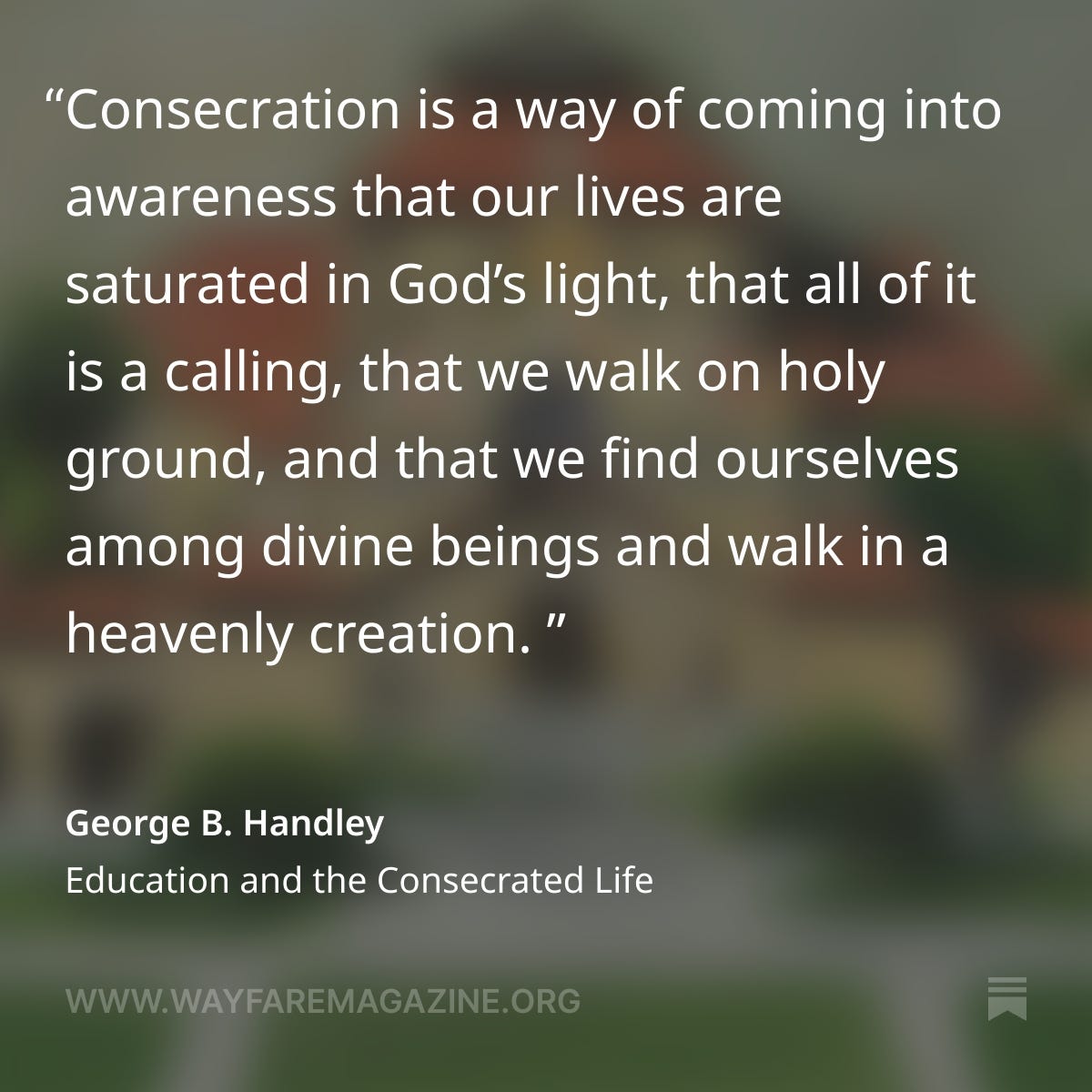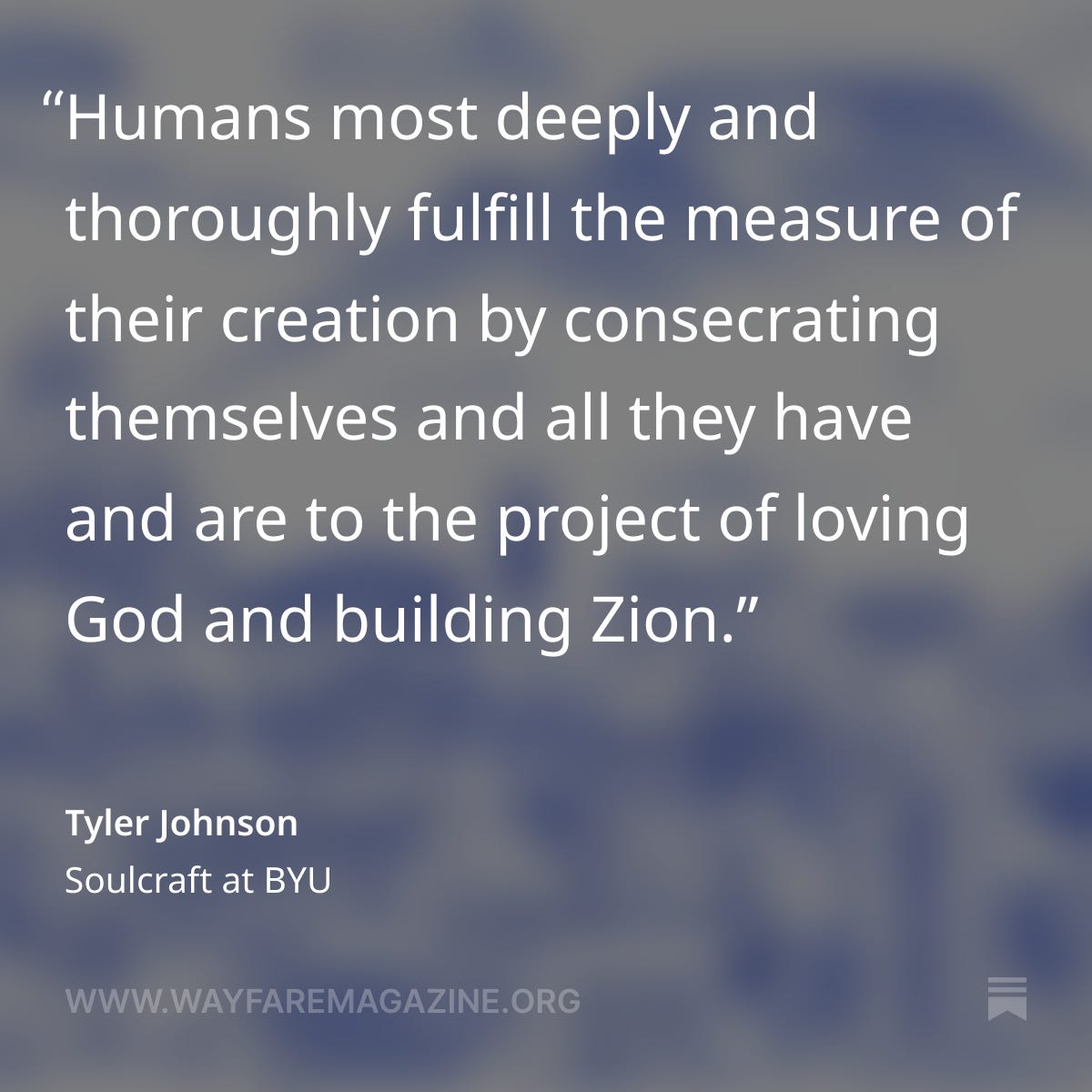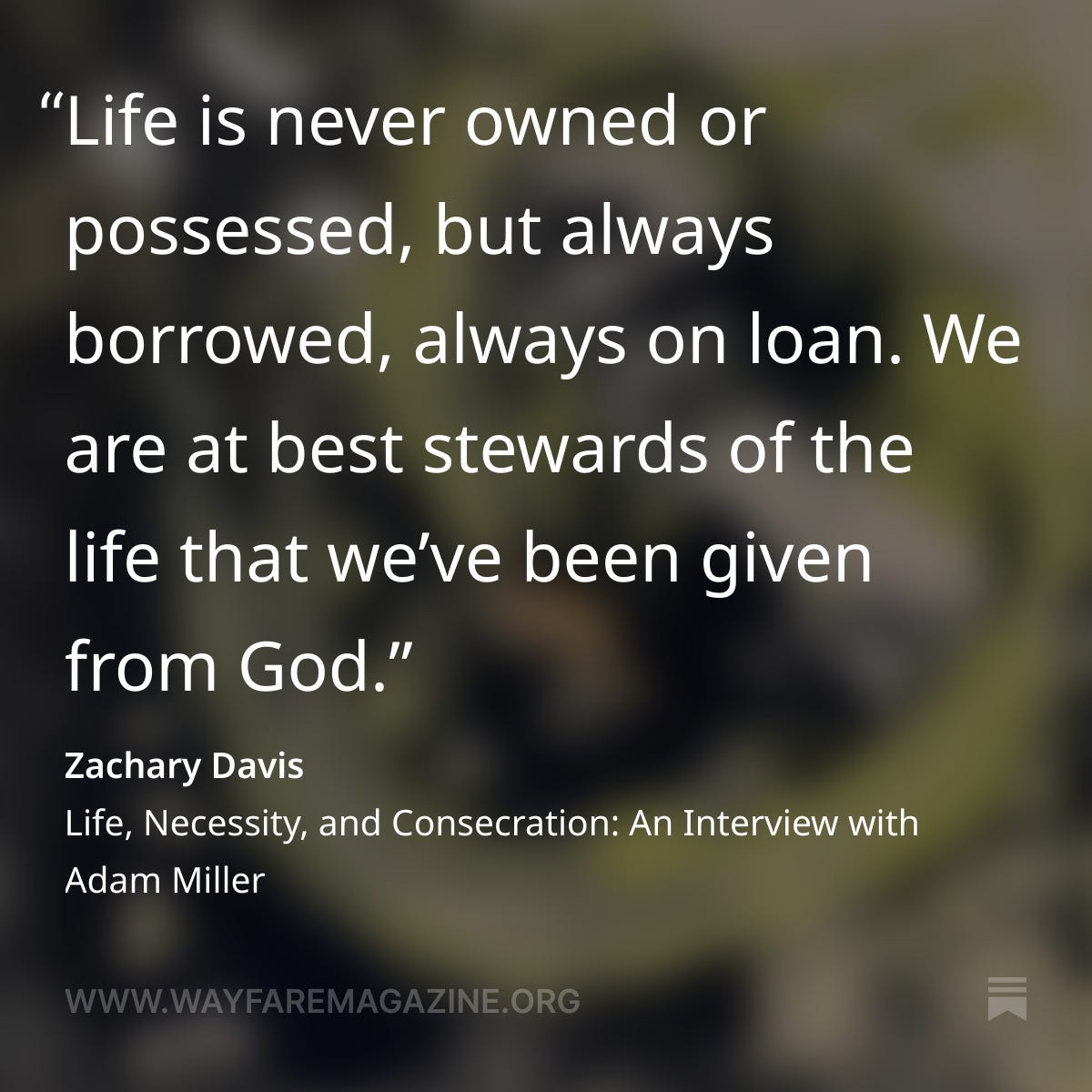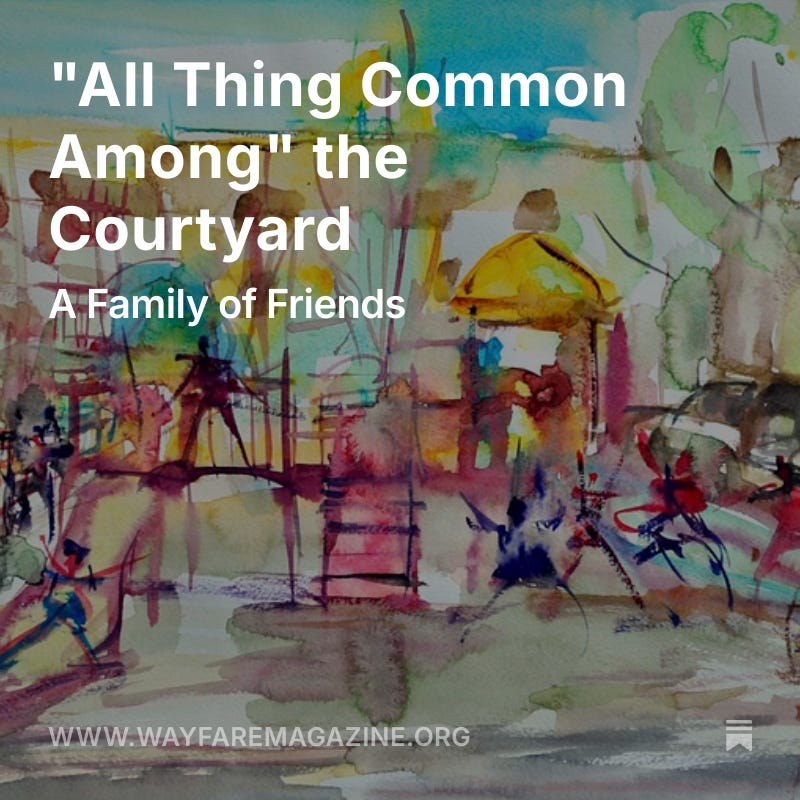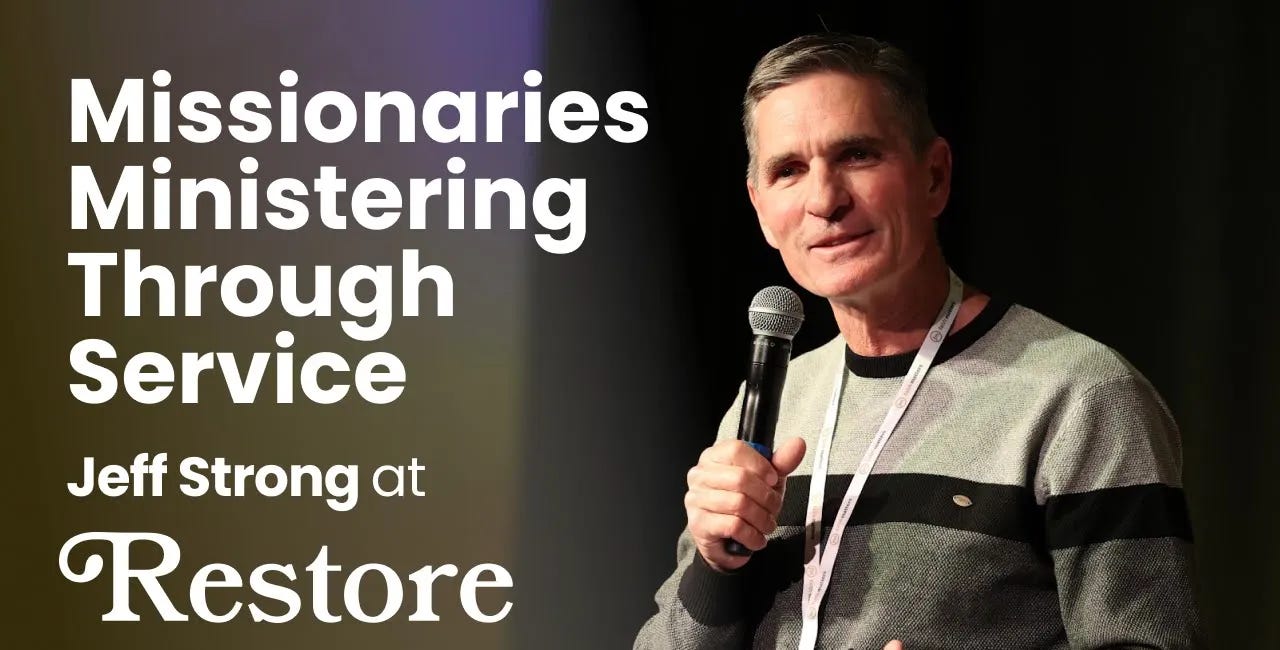What does it mean to live a consecrated life?
Faith Matters resources to accompany your Come Follow Me study: May 26-June 1

The Lord wants me to be a faithful, just, and wise steward. I can use the blessings God has given me to bless others.
If you can accept you are known and loved by God, you will begin to feel called to give your life to him. You will begin to feel the holy significance of even ordinary events in your life. This paradigm shift is consecration. … Christianity calls us to a life of service that lifts our fellow sisters and brothers both temporally and spiritually. Consecrating our lives to God means that we look at the seemingly random and particular conditions of our lives—what we might consider our secular life—as gifts of God and sacred opportunities to realize these purposes for his children.
… Consecration starts with the simple and brave habit of turning our everyday life and all of its opportunities over to God and thereby transforming every aspect of our life into a series of callings, large and small. In this way, church service is really just the lab where we learn to extend consecrated service to every dimension of life.
…As painful and confusing as any present moment can be in our lives or in our church or nation, let us remember that consecration transforms the present moment from its seemingly arbitrary and disorienting qualities into that very moment for which we were born. When we walk in God’s spirit, it whispers over and over to us, Right here, right now is your moment. Consecration is a way of coming into awareness that our lives are saturated in God’s light, that all of it is a calling, that we walk on holy ground, and that we find ourselves among divine beings and walk in a heavenly creation.
—George Handley, “Education and the Consecrated Life”
“Humans most deeply and thoroughly fulfill the measure of their creation by consecrating themselves and all they have and are to the project of loving God and building Zion.
…For a brief time in the early church, after all, members were invited to live the law of consecration. The physical administration of the law never functioned as intended—and commanded—but the ideas still matter greatly.
In this theoretical order (as outlined in Doctrine and Covenants 42), a person upon joining would legally deed all they owned to the church. Now penniless, the member would counsel with the bishop, and they would together determine a stewardship over which the member would be given temporary control. But, again, the property was not given—it was loaned with an expectation of accounting down the road.
The consecrated life—even today—involves multiple paradigmatic shifts:
I own nothing.
All I have and am are gifts from God.
Those gifts are meant not for me alone but to be used to bless the world entire.
I will be held accountable for the stewardship I exercise.
…Our unique doctrine of consecration positions us to make an important contribution to society’s understanding of the power of education: consecration allows us to measure value not in what we achieve or what we gain, but, paradoxically, in how little of what we gain is left for ourselves.
… Excellence matters not for excellence’s sake but as a means to blessing the world. Our excellence and all that flows from it are gifts to be consecrated, not property to be exploited. We will be judged not by the appearance of the good we do, but by its substance. We cannot prove greatness by amassing degrees, money, positions, or power—we will demonstrate our greatness only by the completeness with which we give it all away. It is by not having any left for ourselves that we fulfill the commandment that comes to us by way of covenant.”
—Tyler Johnson, “Soulcraft at BYU”
We’re all going to get sick and grow old and die and lose everyone and everything. This world itself will pass away. There's no fighting that. We might tweak the time and the place and the manner of this passing. And we can certainly take responsibility for how we handle this passing. But at a really fundamental level, there's no winning. There's no skipping out on loss and death, there's no avoiding it. Loss and death are just part of what it means to be alive.
In my view, learning to handle that loss in a way that's productive rather than paralyzing is the point of practicing a religion, it’s the point of showing up at church on Sunday, of reading your scriptures. Religious practices open up a little bit of space between you and the world, space that gives you some freedom to move in relation to it. A little room to appreciate it.
We have a good name for this space—for the work of opening up that kind of space—in our tradition. It’s what we call consecration. To practice our religion is to practice consecrating everything. And I’m consecrating everything when, instead of trying to own or identify with my life or the trinkets I collect, I continually cultivate instead a sense of responsibility, a sense of stewardship, that doesn't look anything like identification or ownership.
And that, I think, is exactly what opens up some space between me and my own life. In that distance or space, I can take responsibility for my life. I can be a steward of my life—the life that I'm only borrowing from the world—without identifying with it. I can take responsibility for caring for my life precisely because I'm no longer trying to keep it, control it, own it, and identify with it. There's a lot of sadness and loss and suffering out there in the world that we must greet and care for and respond to, but we don’t have to identify with it.
—Adam Miller, “Life, Necessity, and Consecration” from Wayfare Issue 1
Are You a Steward or an Owner? — A Conversation with Ganel-Lyn Condie
In this episode, we spoke with Ganel-Lyn Condie, a popular motivational speaker, author and podcast host. We spoke with her about a couple of topics that she’s spoken and written about recently — first is her concept of “stewardship vs. ownership,” which is a really great insight into facing challenges without letting them become an identity.
The courtyard offers itself as a canvas for connection and exchange. Residents donate toys to the courtyard and kids play with them freely. We learn that all this abundance belongs to everyone. I’ve stopped buying any new toys, knowing our children have dozens of toys just outside our back door, thousands if you count the blades of grass and sticks and gopher holes they also play with. My kids learn that the world is theirs, and that it is also everybody else’s. They take home a toy from the courtyard, and then we bring it back. For his birthday, my son asked for new batteries to replace the ones in the broken toys outside, and then we spent the day unscrewing the neighborhood toys and replacing their batteries.
—Lindsey Meservey, “All Things Common Among the Courtyard”
If the temple gives us added strength to cope with our individual challenges, our baptismal covenants remind us that at least a part of that strength ought to go towards bearing the burdens of others. Stewardship is not ownership. Since we do not own the temple, thinking of its power purely in terms of our own spiritual health (or worse, as part of one of our seemingly unending righteousness checklists) is misguided and profoundly stifling.
—Peter Mugemancuro, “Redeeming the Dead,” from Wayfare Issue 4
I suggest that the garment is neither a vestige of a magical worldview nor an arbiter of Victorian ideals of modesty; rather, its purpose is to be formative of a person’s subjectivity. It forms Latter-day Saints as consecrated individuals and forms us as followers of and in likeness to Christ, who epitomized consecration. The garment is symbolic of the veil of the temple, which is not only symbolic of Christ but is also the place in which we present ourselves before the divine. In an embodied way, we pronounce our total presence, availability, and openness to divine call, the tangible equivalent of verbal exclamations of women and men in the scriptures who played pivotal roles in salvation history by declaring, “Here I am!”(see Gen. 22:1; see also Gen. 22:11, 31:11, 46:2 and Luke 1:38). Such a pronouncement is to me the essence of consecration, and I believe that the garment represents my perpetual position before the veil, reminding me that I am forever at the disposal of the divine.
—Deidre Nicole Green, “Clothing Ourselves in Christ,” from Wayfare Issue 4
I can invite others to come unto Christ wherever I go.
Jeff Strong: Missionaries Ministering Through Service
Learn about Jeff’s experience as a mission president of the Bentonville, Arkansas Mission where he and his wife led a phenomenally successful pilot program with their missionaries. For us, the story of the Bentonville, Arkansas mission has totally revolutionized the way we imagine missionary work.
I can turn to the Lord when I am hurt by others’ choices.
In this short video from Where Peace Begins, a series from Faith Matters’ Peacemakers Needed iniative, Jamie White shares, powerfully, how Jesus’ example has guided her reconciliation process.
“There’s a lot of things Jesus didn’t say. There’s a lot of questions he did not answer. However, he did talk a ton about love. And he said a lot about loving our enemies. And then he showed us what it looked like: he laid his life down. And none of that looked like weakness. Every single time, it looked like incredible strength. And it didn’t make anyone afraid of him. It made everyone want to be near him. And people got whole, and healed.” —Jamie White
And in this video, Dr. LaShawn Williams shares how, when going through her divorce, she once leaned her head against the wall and imagined she was leaning her head on the shoulder of Jesus. She prayed for a heart at peace.


